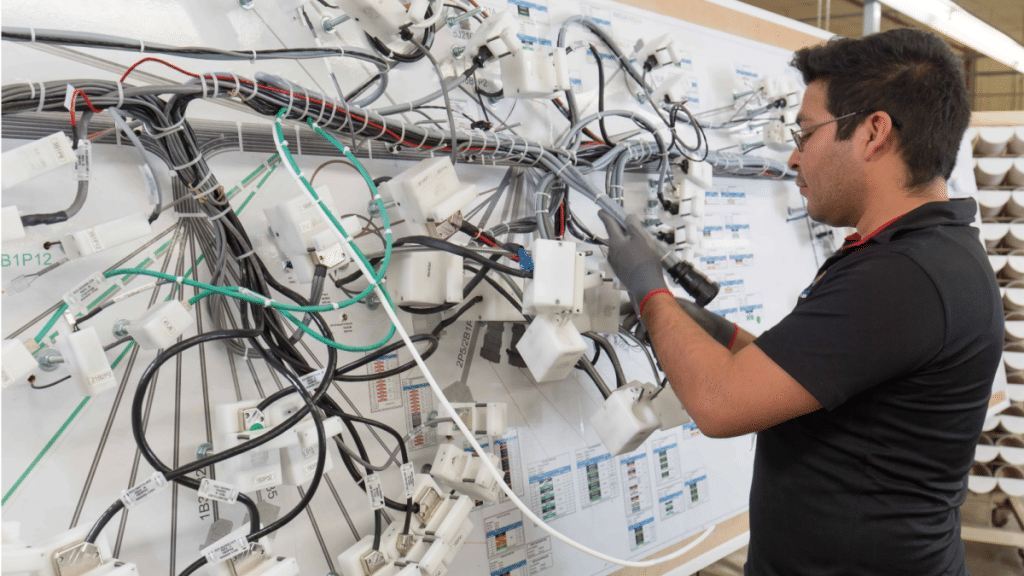Cable assemblies are used in a variety of industries and applications, from medical devices to electronics. The cable assembly manufacturing process is a complex and detailed process, but we’ve broken it down into a few simple steps to give you an overview of how it works. Keep reading to learn more about the cable assembly manufacturing process, from start to finish. Thanks for reading!
The cable assembly manufacturing process begins with a design.
The process of designing and assembling custom cables is a complex yet rewarding task. The foundation for any successful cabling job starts with an effective blueprint. Good design eliminates unnecessary components while accounting for all variables, thus increasing the speed and efficiency of assembly, as well as its quality. With today’s technology such as CAD systems and other design software, manufacturers have the tools necessary to create sophisticated cable designs to meet whatever requirements their clients may have. Once the design phase is complete, assembly can begin. With a quality plan in place, the manufacturing personnel are able to build and test the most difficult assemblies quickly and correctly, resulting in customer satisfaction.
Once the design is complete, the cables are cut to length and the ends are stripped.
Once the design process is completed, the next step in building a cable is to cut each wire to the proper length. This requires precision as any over or under cutting will result in an unworkable cable. To ensure accuracy, a specialized cable stripper is used to cut the wire precisely and to carefully remove the insulation from both ends of the each wire. It’s critical for this process to be done correctly in order for all components within the cable to join up properly and provide optimal performance.
Next, the wires are terminated with the appropriate connectors.
Termination of the wires with appropriate connectors is a key step in any wiring process. From household electrical tasks to complex factory designs, the right kind of connector is required to ensure a secure connection that won’t cause an electrical malfunction or worse, injury. It’s always best to match the connectors with the type of wire being used since some types are not compatible with one another. Employing a critical eye during this stage can be the difference between successful and failed outcomes, providing peace of mind for anyone using or relying upon the wiring system.
The assembly is then tested for continuity and proper functioning.
Quality control is a vital step to ensuring the proper and safe operation of any product; for this reason, the assembly process must be thoroughly tested. Before components are put into use, the continuity of each piece must be checked to make sure that it can properly interact with other parts and provide the desired result. The testing process also includes evaluating how well the overall assembly functions as a unit. This ensures that all components work together as they should, providing an effective and reliable solution. By following these steps, companies can provide their customers with safe, high-quality products that exceed expectations.
Finally, the cable assembly is packaged for shipping or storage.
After undergoing a rigorous process of assembly, testing and quality assurance checks, a cable is finally ready to be packaged. The utmost care is taken to ensure that the packaging is suitable for the transportation or safe storage of the cable as per industry regulations. It will often be marked with labels containing information such as type of package and its contents, while some packages may even have additional features like moisture barriers or thermal insulation to protect the product. The entire process of packing a cable is an essential part of delivering it in the best condition possible and helps in protecting fragile components during transit.
The manufacturing of a cable assembly is complicated but rewarding when done correctly. An experienced manufacturer will ensure the design and Connector-Terminated Cable completeness are in line with customer requirements, that the wires are flawlessly cut and stripped, that there is proper connection with the right connectors, as well as conductive testing to guarantee that an assembly’s functioning meets quality standards. Moreover, these assemblies consider meticulous handling of wiring complexity in order to satisfy customer satisfaction. By understanding the intricate details behind a successful cable assembly manufacturing process, customers can be secure knowing they are buying a product that has been expertly crafted with attention to detail throughout every step of this process.

